Small estuaries, such as those found in Devon and Cornwall, Wales, Northwest Scotland, and along the south and west coast of Ireland, for example, are consistent places to fish, offering a wide variety of species. To get the best from them, we need to understand a little of how the estuary works and how the fish use the tides within the estuary system.
Seasons
Breaking the year down into the four common seasonal periods helps focus things.
Spring fishing covers the middle of March to the middle of May. Fish like flounders, bass, and plaice are increasing in numbers as they come back in from spawning. There’s a chance of thornback ray from the mouth’s of the estuaries, with garfish and mullet moving in from April onwards. Late March can also see the return of gilthead bream to our more southern and western estuaries.
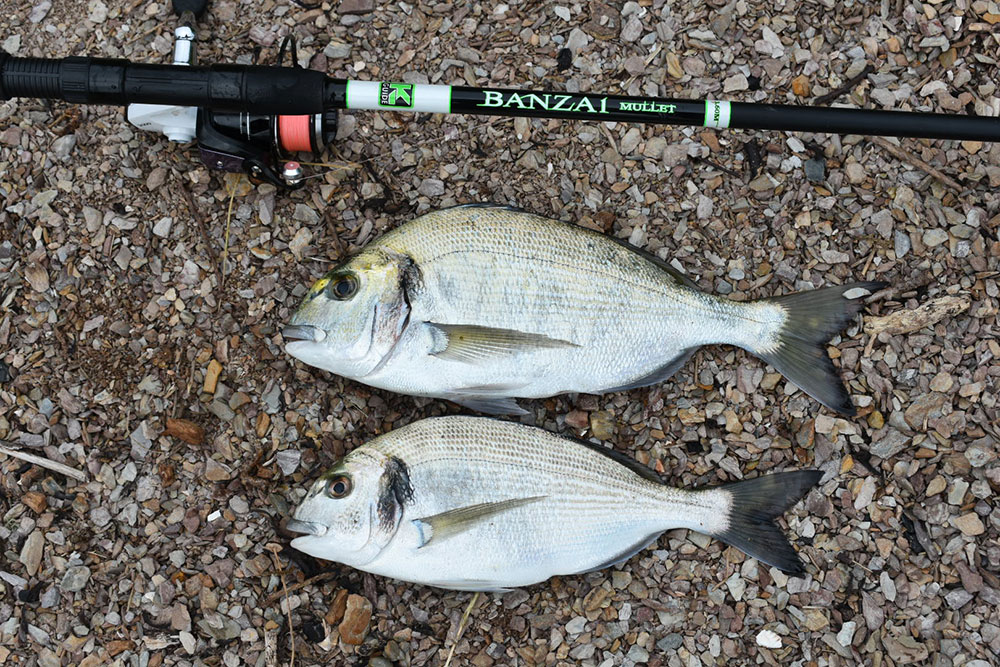
The summer period runs roughly from mid May through mid September. The main species stay much the same, flounder, bass, mullet, garfish, and plaice remain, but there can also be bonus species such as tope that will come in with the tide to feed on the flatties and bass during June and July, also mackerel. The garfish and bream will gradually thin out inside the estuary from July on as they slowly migrate offshore.
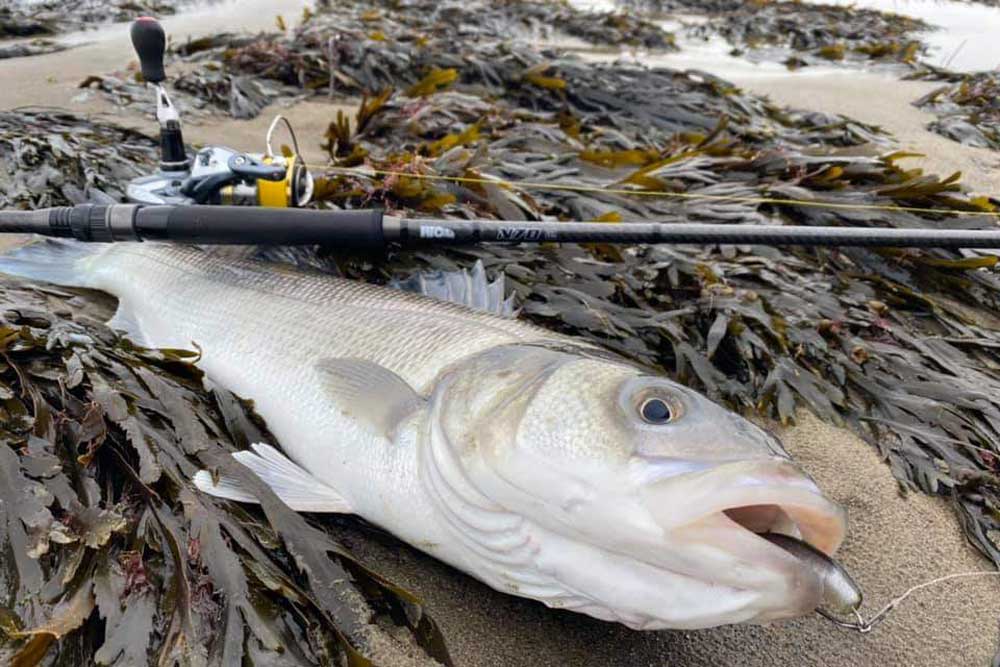
Autumn can be classed as mid September, October, and November. There is more of an overlap into December than there used to be due to warmer autumn’s, but the flounders remain, as will the bass, though the latter will reduce in numbers as fewer crabs peel and the food supply reduces. The mullet move out in October, though some will stay longer if the weather is mild. In the larger estuaries, there is a chance of thornbacks moving back inshore in October and November. September sees the whiting arrive, along with an increase in dabs. Codling are possible in October and November.
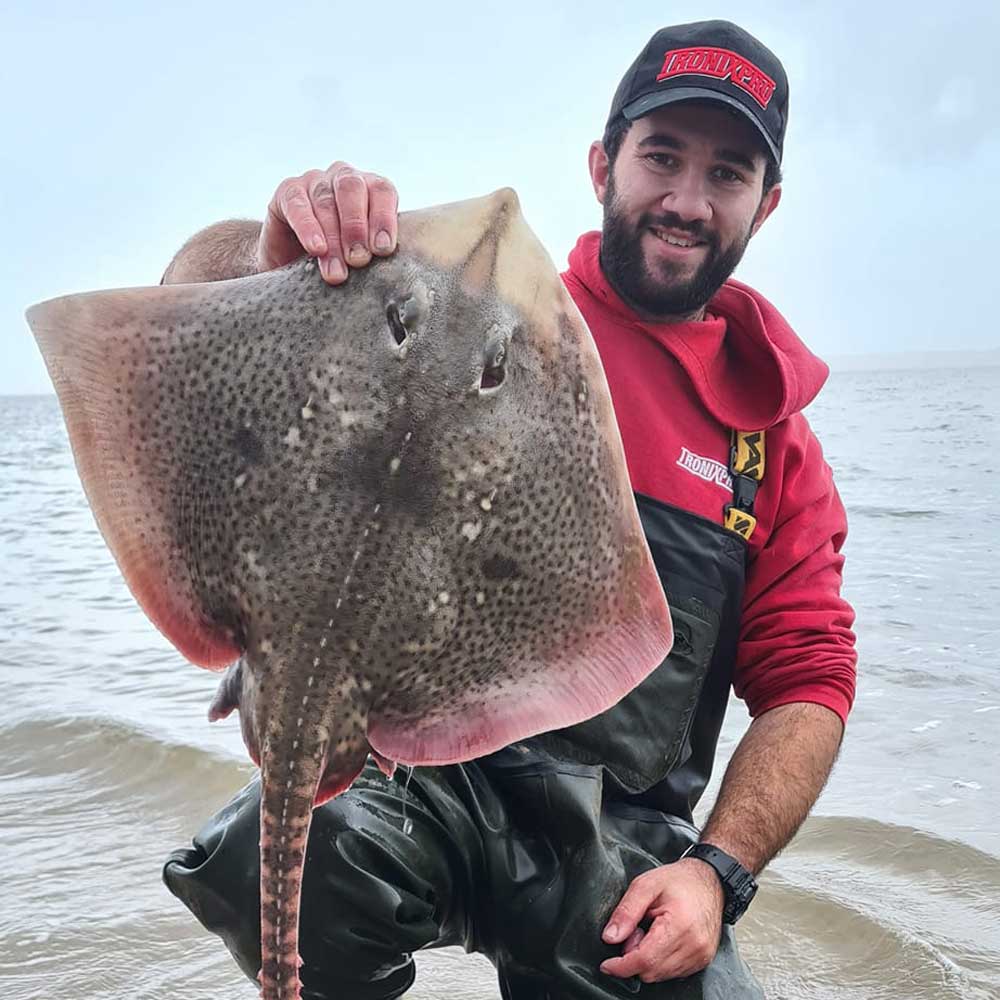
The winter period, December to mid March will see the odd flounder, codling, dabs and school bass caught. Coalfish will move into the estuary in numbers, with December and January the best time for these. February can see the odd late specimen flounder as their spawning run is very staggered with most spawning fish leaving between late October and January. Any codling will thin out by mid January.
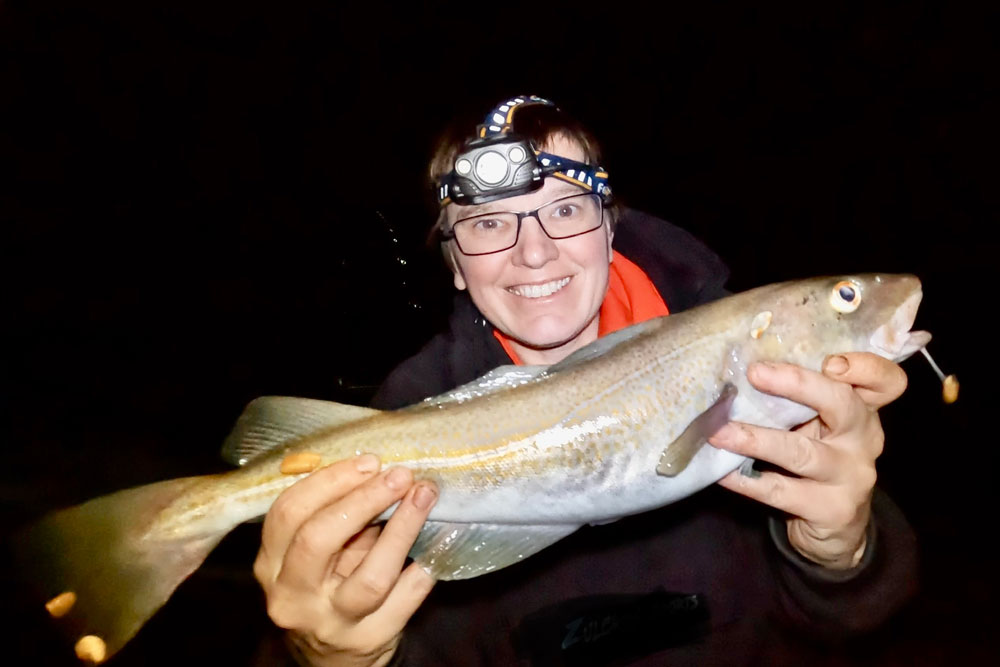
This timescale roughly works for our more southern and western estuaries, but the fish may arrive two to three weeks later and leave three weeks earlier in Scotland.
Where to Fish
Most small estuaries have a shallow bar at their mouth. Bass, tope, codling, mullet, and garfish will shoal up on the seaward side of this then run into the main channel as the flood tide starts to push. The gars and tope will work the deeper main channel but usually stay fairly close to the open sea.
The bass follow the tide in and will work themselves into the salt marsh drainage channels and even work the salt marsh itself briefly while there is the depth to do so. Bass will also move right up to the junction of freshwater and use the outgoing tide to drop all the way back. Gilthead bream are another traveller that work right up into the muddy creek channels.
Mullet move into harbours, but again frequent the drainage creeks and salt marsh towards high water.
Good places to fish are near the mouth of the estuary, close to any seed mussel beds. Also, look for places where the main channel narrows and speeds up the tidal flow. This fast tide generally sees a scoured out deeper area that will hold codling, bass, plaice, coalfish, and flounder in season. Promontories of rock that jut out into the main tide flow will also draw fish on their down tide side.
The mouths of drainage creeks that flow into the main channel are always fish magnets, especially on the flooding tide. Other good spots are the steeper edges of the drainage creeks covered in a mix of rocks, mud, and weed. These areas will see numbers of crab that use such ground to hide in while they peel.
Harbour access channels used by boats always carry fish, and pay attention to where moorings are positioned as the mooring chains and rope offer sanctuary for smaller fish, plus mussel grow on these and draw in flounder and plaice.
Estuary harbours are often guarded by breakwaters and these fish well too, especially on the inside where the water is calmer. Such spots are good for mullet, gars, mackerel, bass, with wrasse and conger in between the base of the rock structure. Find out more about fishing Breakwaters here.
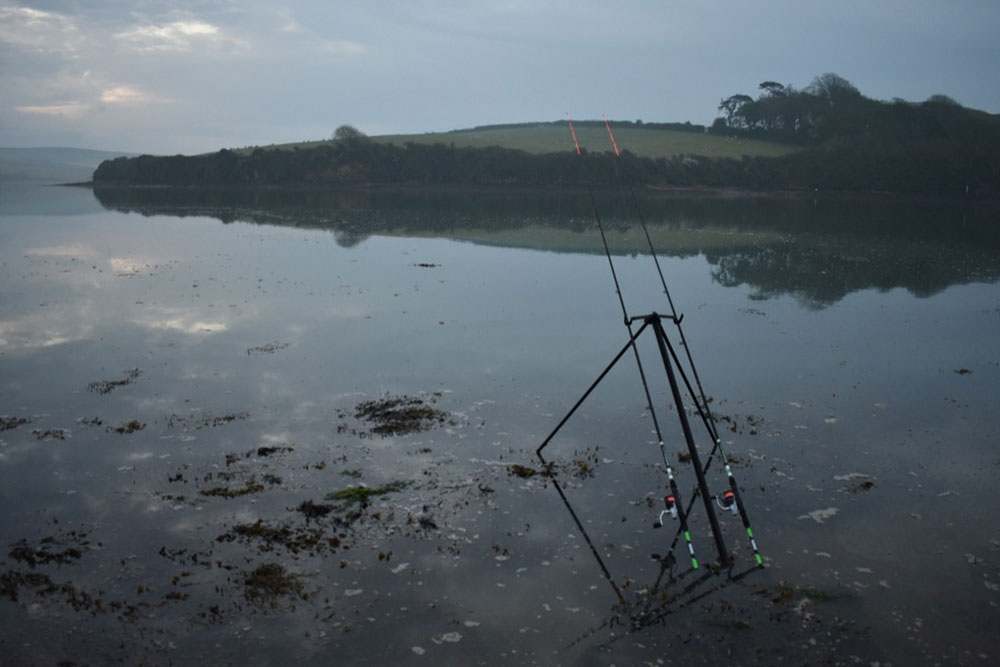
Weather and Tides
The killer inside estuaries is acidic flood water from inland hills. This will force most of the species back seaward, and even flounder will hunker down in deeper channels and holes inside the main channel and just sit it out. It can take three or four days for flood water to subside and at least that for species to return in any numbers. Periods with light or no rainfall fish best, and encourage species to work further into the estuary than they would otherwise.
Weather patterns will vary inside estuaries. Spells of mild onshore winds and warm days with settled seas are best for mullet and garfish, plaice, gilthead bream, rays and tope. In winter, expect dabs, coalfish and possibly herring. Stronger winds and rougher seas will see a greater chance of larger bass, codling, and maybe cod being caught. Bright sunny days offer less consistent fishing than overcast skies will. For species like rays, cod, bass and coalfish, the night tides will normally out fish daylight.
The smaller neap tides can fish well in estuaries due to their reduced tidal flow. This is especially so in the lower reaches from just inside the bar or mouth and for a short-distance inland. The smaller neap tides can fish for the full flood, but usually show a drop in catches during the mid-flow period. Outgoing tides are less consistent, but bass and flounder will feed as they drop back into the deeper main channels. On the bigger spring tides, catches will be more concentrated around specific times such as the first two hours of the flood, the hour either side of high water, and the middle hours of the outgoing tides as the fish drop back out to sea.
On the bigger spring tides, the bass will come over the shallow estuary bars as soon as there is enough water to allow them access. They use the full flooding tide to access high up into the estuary, sometimes several miles, and some will even stay in mid estuary for several tides, moving back and forth with the ebb and flood.
If you target the tope and rays, then expect the best action to be on the rising middle-sized and spring tides, with the two hours before high water the key time. A flooding tide with high water in the dark can produce the best fishing for these two species.
Tackle for Estuaries
For the tope, rays, rough weather bass and cod, beachcasters such as the Competition Naga, Competition Blackout and Banzai Beach are ideal. Matched to a multiplier such as the Banzai Tournament Mono Mag loaded with 20lb Competition XT Mainline and a 60lb to 80lb Xenon Leader shock leader. Three-piece rods such as the Competition Performance and the Guerilla CX are also great rods when coupled with a fixed spool such as the Xenon C-6 or Guerilla Surf. Again, these fixed spools should be loaded with 20lb mono and a 60/80lb leader. If you prefer to fish with braid, Tronixpro X8 Probraid in 30lb with an 80lb leader is perfect.
The Banzai Bass Rod is great for standard ledger fishing inside estuaries coupled with a Guerilla Mono Mag multiplier loaded with 18lb Xenon Mainline and a 30lb Xenon Leader shock leader. Alternatively, a 5000 sized fixed spool reel loaded with 20lb Tronixpro X8 Probraid and a 40lb braided leader is another good option.
When after mullet, garfish, bass on the float etc, the Tronixpro Banzai Mullet and Banzai Multi Tip rod come into their own.
Baits
From late March to mid November the top estuary bait is soft or peeler crab, mainly the latter. This will take bass, plaice, flounder, giltheads and the occasional ray. Cut the crab in two across the body and use in sections using enough to fill the hook size you’re using with some bound up the hook shank with Tronixpro Baitex to hide the shank.
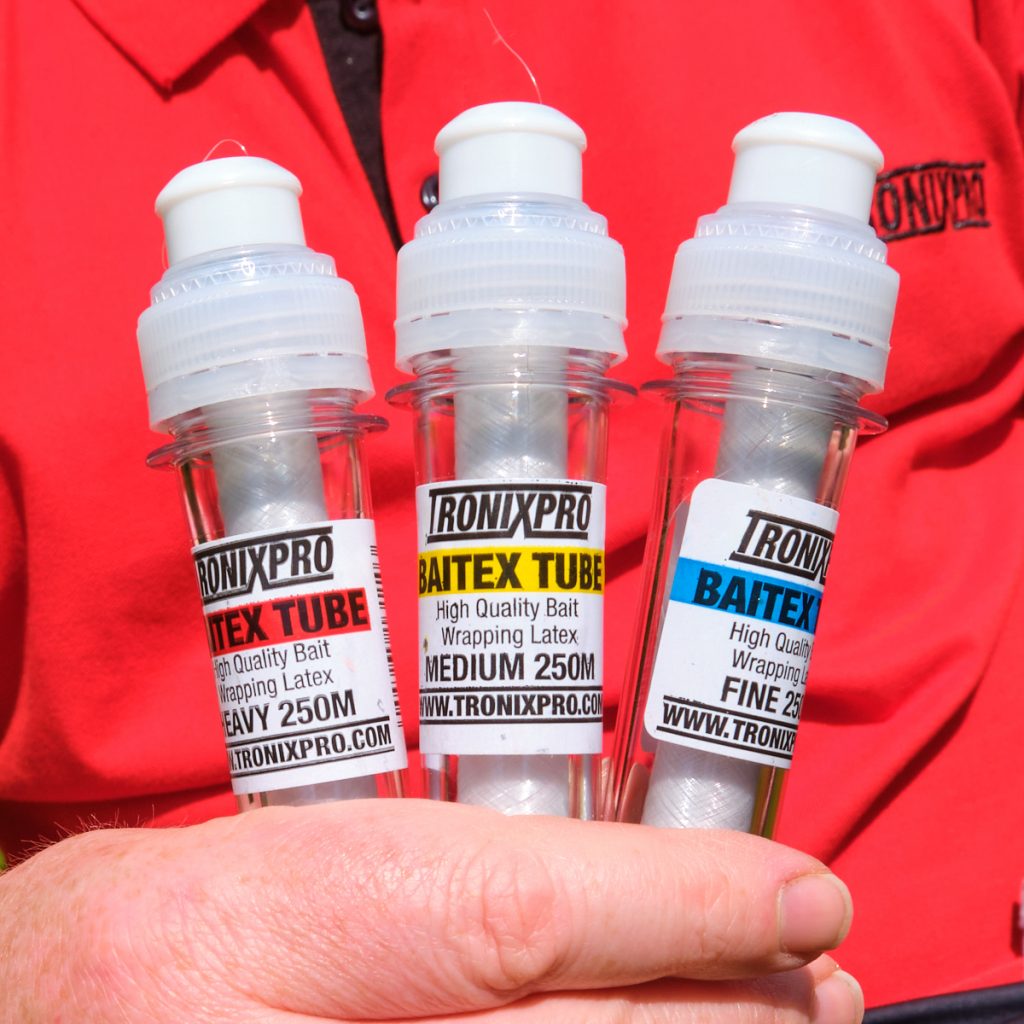
Lugworm and ragworm are good all year round for flounder, school bass, plaice, dabs, codling, and coalfish. Lug can be a fair bait for gilthead too, but not as good as crab. Again, cover the hook with a short section of worm fed onto the hook length above the hook. Maddie or harbour rag are also very effective, especially for mullet, flounder, also summer golden grey mullet. Hook four or five worms onto a fine wire hook by the head end, only leaving the tails to wriggle below the hook.
Mackerel baits as fillets or body sections will take the ray and tope. Use small strips from the mackerel’s belly section, about 1-inch by a half inch for the garfish.
Tactics
The knack to fishing estuaries successfully is to learn to follow the fish. A good example are the bass. Initially target these as they come over the bar with the first of the flood. You’ll get maybe an hour here, then need to move. Head down the estuary to where there is a narrowing of the channel where the scoured out hole is. The bass tend to lay just on the flanks of the deep water hole, picking off sandeel etc. Two hours before high water, move into the drainage creeks fishing the weedy edges where the crab hide, or the rocky weedy areas higher up the estuary along the main channel.
The flounder move out of the main channel and work along the shallow sandy flanks right up through the flooding tide, dropping back out to deeper water slowly as the tide recedes.
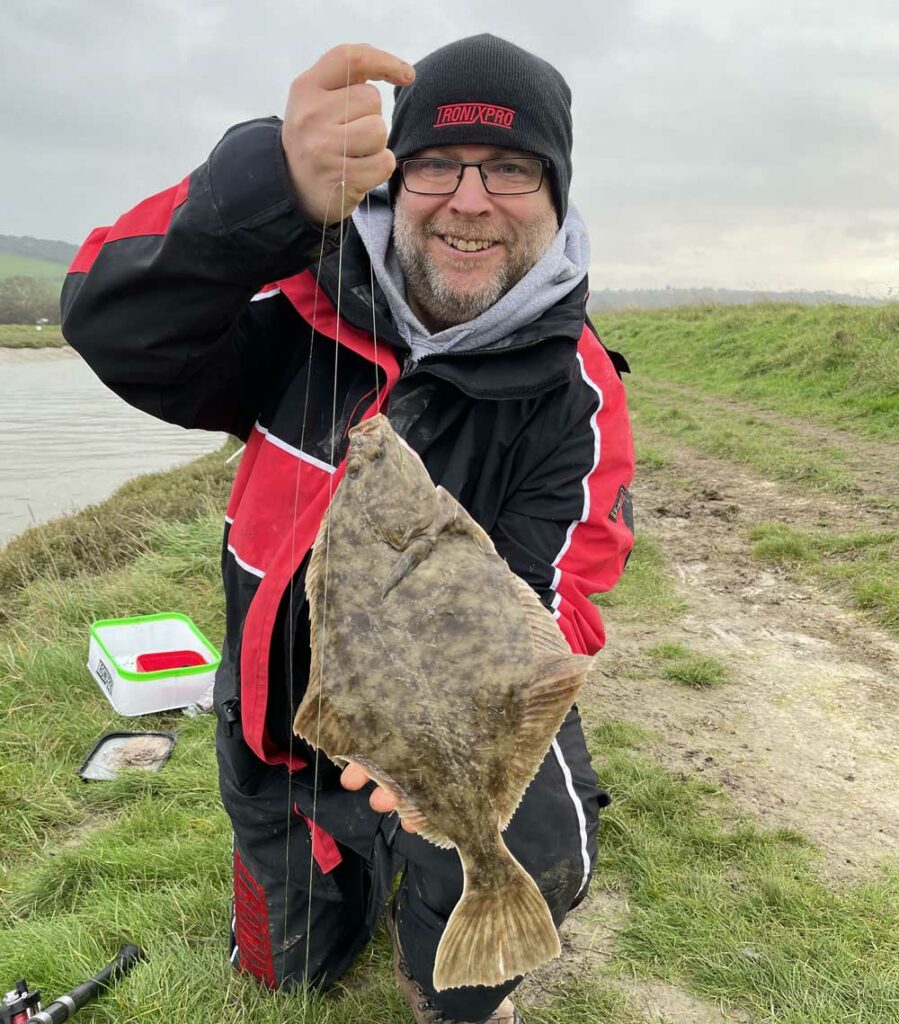
The plaice will be in the deeper holes in the main channel and are a fairly static target, so once you’ve found them, keep casting to them.
The tope come in around mid-flood and stay until the tide starts to ebb. They move in fast, often giving you just 10 minutes or so to intercept as they move through the main channel. Have a secondary mark for later in the tide. This could be a rocky outcrop that holds the fish up, a series of sandbanks where they can hunt school bass and flatties.
The mullet also come with the flood tide and are best targeted inside the drainage creeks and any harbours in the two hours before high water. Garfish will be where the main channel narrows in the faster tide run, also alongside breakwaters and inside harbours.


